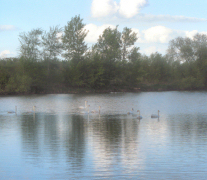| Smooth newt |
|
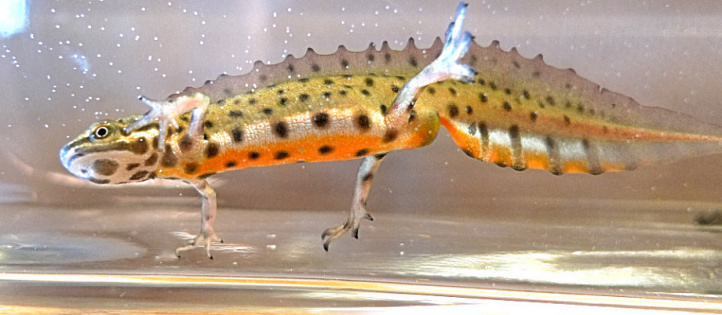 |
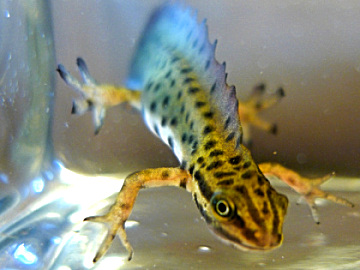
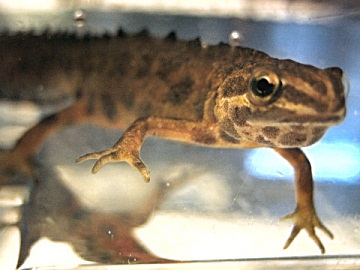

|
This is a male smooth newt in it’s beautiful
fluorescent colour during spawning period. Daytime in spring the males
are often found in groups in shallow waters where they hunt females down
and impress them with their colourful outfit. When they have found a
female mating happens several times in the shrubs. The sperm is
transferred to the female’s rear end where they are fertilized before
they are individually placed on leaves.
Newts are sometimes
called water-lizards and the males sure look like smal dinosaurs with
their impressive large back comb. Imagine if they would be 10 meters
long instead of 10 cm.
The tail also has great function as it
gives the speed with a slapping motion just like fish would do.
The front-feet on a fully grown newt have four fingers with small claws.
The claws are especially usefull when the newt is moving on land for
example when climbing on vertical walls that have a slightly uneven
surface. The feet are also used to dig and drag themselves into cavities
or to paddle precise during short distances. Their feet do not have only
one purpose and their exterior therefore is a compromise. The skin is
covered with tiny warts. Looking at their soles of the feet they seem
moist and smooth.
A young female can utilize the surface tension of the water to
sunbathe. She is floating, something that the great crested newt never
would do since they rather sit on the bottom of the waterbody.

|
|
|
|
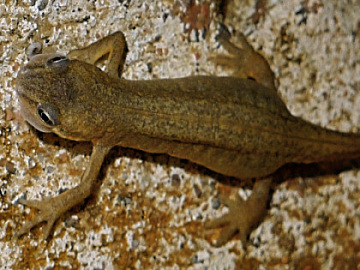
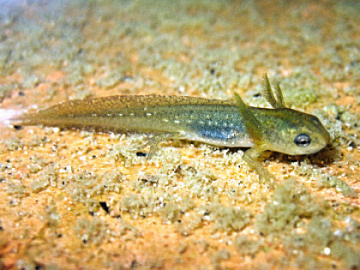 |
Her colour is somewhere between green-brown and
grey-green without any special signs. Unlike the great crested newt the
lower part of the abdomen on females can increase it size a lot during
ovulation. Maybe this is not that surprising as the eggs from the two
species are almost the same size but the smooth newt only is a fourth of
the great crested newts body volume and half of the length.
The
tiny newly hatched larvae is only 1 cm long and eats algae and bacteria
that is served on plants and rocks. When growing, water fleas and other
small insects will serve as the main food source in the water.
On
land they often have to dig for larvae in soft forest beds or in compost
heaps. The small larvae requires a lot of nutrients to survive the
winter when it digs itself down under the frostline and hiding under
stumps and rocks. In the water it is possible to attract grownup
individuals with little worms.
|
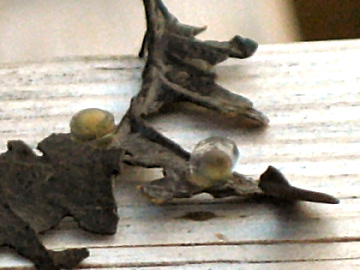 |
Observing the females during ovulation shows that
they roll around on the bottom of the waterbody with leaves as they lay
eggs on them. Unlike the great crested newt the smooth newt places its
eggs on individual and detached plant pieces, maybe because they don’t
have the same strength in their feet to fold the leaf. The result is a
small light brown egg attached to the leaf with a transparent gel.
|

